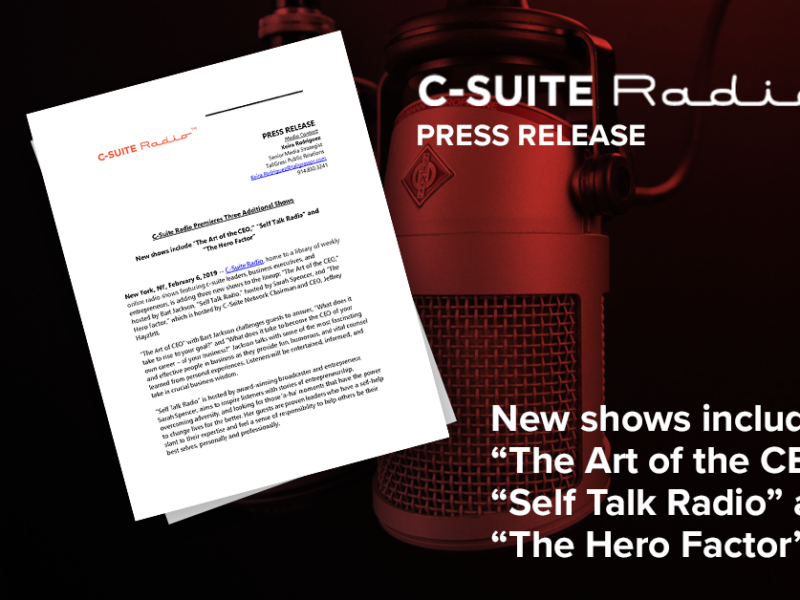
Teaming of Operating Partners and CEOs Following Add-On Acquisitions
Teaming of Operating Partners and CEOs Following Add-On Acquisitions https://csuiteold.c-suitenetwork.com/wp-content/uploads/2014/08/team.jpg 507 337 C-Suite Network https://csuiteold.c-suitenetwork.com/wp-content/uploads/2014/08/team.jpgby Rob Steinberg

For the first time ever, add-on acquisitions have exceeded platform buy-outs. According to Pitchbook add-on acquisitions accounted for a surprising 53 percent of all buy-outs in 2013, while platform buy-outs fell to 32 percent of all deals in 2013 — the smallest level ever.
The focus on add-on acquisitions stems from the difficulty of growing the bottom line through traditional operational improvements. The old tool kit of cutting your way to greater profitability by terminating personnel, removing extraneous product lines and reducing inventory levels is far less available as, post-recession, most companies have trimmed down or died.
The days of bloated companies with an unfocused, spend-thrift approach to operations are long gone. Accordingly, private equity is turning to growing the bottom-line through acquisition, and then integrating the add-on companies. The value of the combined company is increased due to the higher exit multiples available to larger entities and the improved bottom line through cutting duplicative costs.
To achieve even greater returns, private equity managers ordinarily model in further operational improvement. However, CEOs are challenged to deliver these improvements. One quite obvious reason is that the CEO’s responsibilities increase because he or she is now managing a larger company with more varied customers, products or service offerings. However, there are even deeper and more difficult challenges facing CEOs. They must activate management skills that were much less relevant when they managed only the platform company.
The CEO, whom prior to the acquisition was primarily an operator, must now also be an integrator. The characteristics of an integrator are very different from those of an operator. Operators think short-term, map out roles and responsibilities, drive performance and hold others accountable for meeting performance expectations.
As an operator, the CEO functions primarily on the surface level of the company. As an integrator, the CEO needs to dig beneath the surface, identify the undercurrents affecting the surface level of the company and determine how to remove the impediments keeping the team from functioning optimally. The CEO may not have the time (nor perhaps the skill set) to deal with addressing the dysfunctions that naturally arise when two distinct — and often conflicting cultures — need to merge.
An equally difficult issue is dealing with various constituencies about questions and concerns that invariably arise from customers, employees and the Board and/or owners. Preservation of customers after an acquisition is the front-and-center issue. The CEO must focus first on maintaining customers who are naturally nervous about how the change of control may affect them. Even more challenging is dealing with the issue of employee morale. Following an acquisition, there is almost always a dislocation of power and authority, which not only affects the morale of those whose responsibilities are directly changed, but also those who work for them.
To maintain customers and reignite employee excitement and energy at work, the CEO must understand the emotional dynamic arising from the acquisition. A CEO who may be adept at the “hard” elements of management must now focus on the “soft” elements where he or she may have minimal experience or aptitude.
Still another challenge for the CEO is addressing concerns of the owner and Board. The dealmaker sold the add-on acquisition based on a set of assumptions that are frequently inaccurate in some regard. If the combined company isn’t meeting expectations, the dealmaker will likely defend his assumptions and claim the problem is execution. A great deal of the CEO’s energy and focus now must go to addressing claims and concerns of these constituencies.
In short, the CEO of a company with one or more add-on acquisition needs help. In most private equity firms, the help typically comes in the form of an Operating Partner. The Operating Partner is ordinarily an employee of the private equity firm and is tasked with being a high level catalyst for change, primarily acting as a coach and mentor. While he or she may oversee and directly participate in a discrete operational improvement initiative, more often the Operating Partner has numerous other responsibilities and only has time to work or is only authorized to work without directing, focusing or managing anyone.
If that is all the Operating Partner does, it is unlikely he or she will be of significant assistance to the CEO in optimizing value of the add-on acquisition. Simply put, the CEO needs more than an Operating Partner who is a coach or a liaison to the Board or ownership. Rather, he or she needs someone who will roll up their sleeves and help take on the overwhelming demands and diverse tasks the CEO now has.
It works best if the Operating Partner acts as co-pilot with CEO, yet does not usurp his or her control or authority. The Operating Partner may act as that integrating force in the company, focus on the individual agendas that are impeded the functioning of the company or provide an independent assessment of whether the reason the company isn’t achieving expected goals is due to deal assumptions or lack of execution. The responsibilities assigned to the Operating Partner will vary, but in all cases the CEO needs a team-oriented activist who is willing to get in the trenches and be held accountable for achieving real and tangible results.
It is up to ownership of the PE firm to require that the CEO not try to do it alone and get real help from the Operating Partner. It may be optimal to retain an outsourced Operating Partner because it becomes more likely the Board can create a heightened level of accountability, identify the right fit to assist the CEO and reduce the costs of that assistance due to a more pinpointed approach.
Regardless of whether the Operating Partner is in-house or outsourced, the key to success is that the Operating Partner teams with the CEO and has specific goals and benchmarks. What doesn’t work is the old model of the Operating Partner who does nothing more than observe and advise from 40,000 feet.
 Rob Steinberg is the co-founder and Managing Partner of Cornerstone Advisory Services, a management consulting, interim management and outsourced Operating Partner firm in the Twin Cities Minnesota. He was a Managing Director at CRG (now CRG Deloitte) and worked at a split-off firm from the West Coast Office of Alvarez and Marsal. He has served in 6 C-Level positions, including as CEO of several companies, and has provided consulting services for tech, manufacturing, construction and retail businesses.
Rob Steinberg is the co-founder and Managing Partner of Cornerstone Advisory Services, a management consulting, interim management and outsourced Operating Partner firm in the Twin Cities Minnesota. He was a Managing Director at CRG (now CRG Deloitte) and worked at a split-off firm from the West Coast Office of Alvarez and Marsal. He has served in 6 C-Level positions, including as CEO of several companies, and has provided consulting services for tech, manufacturing, construction and retail businesses.




